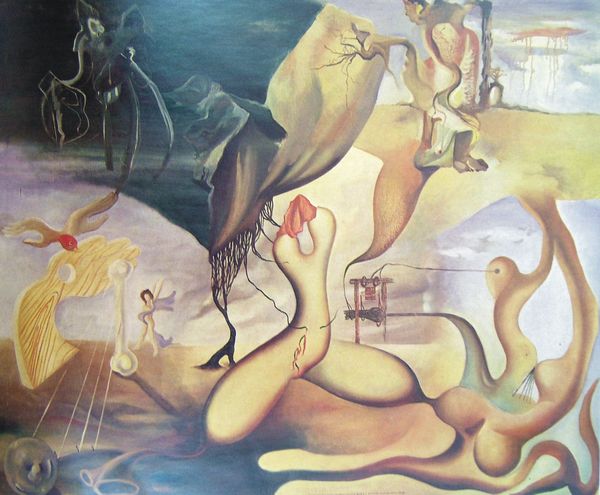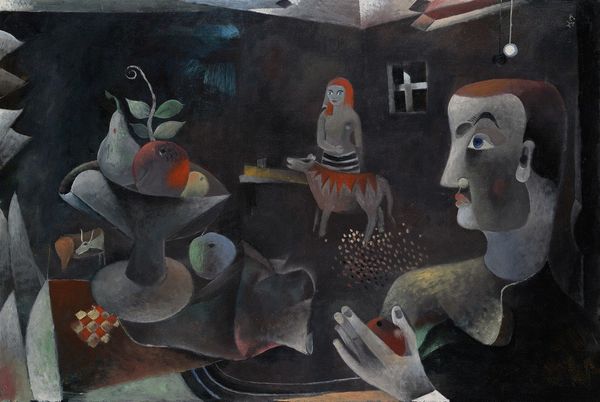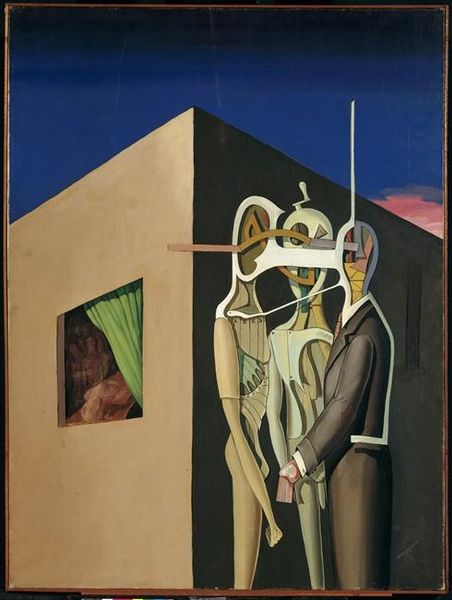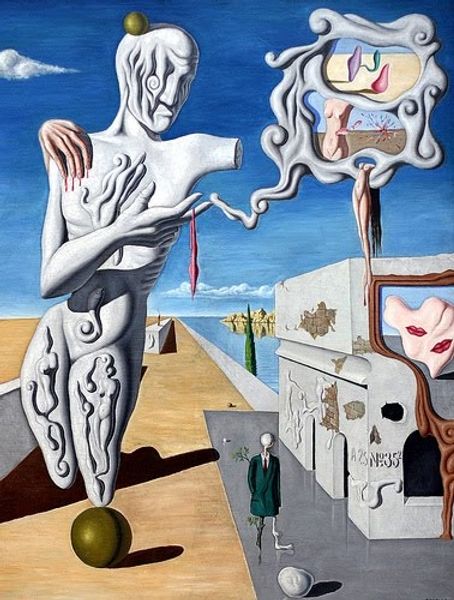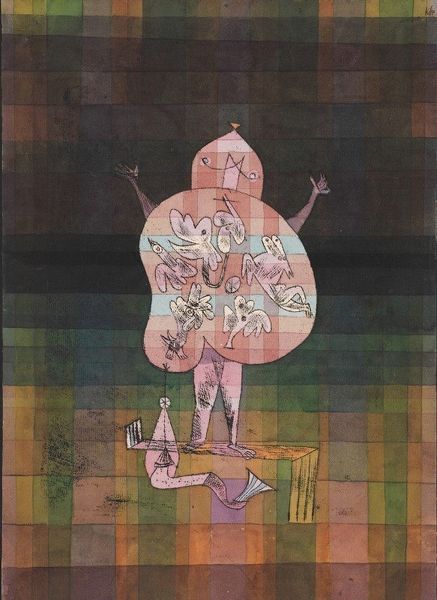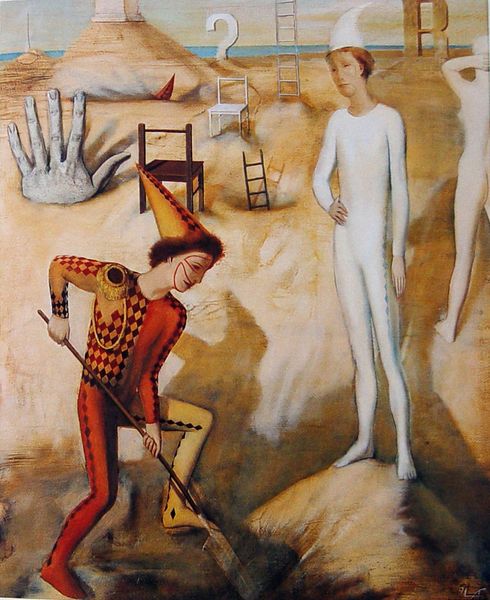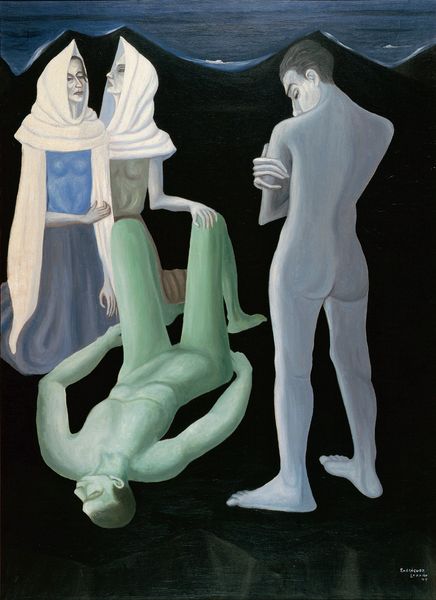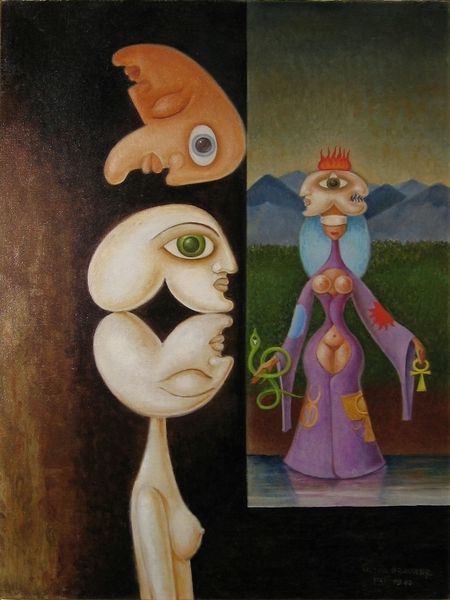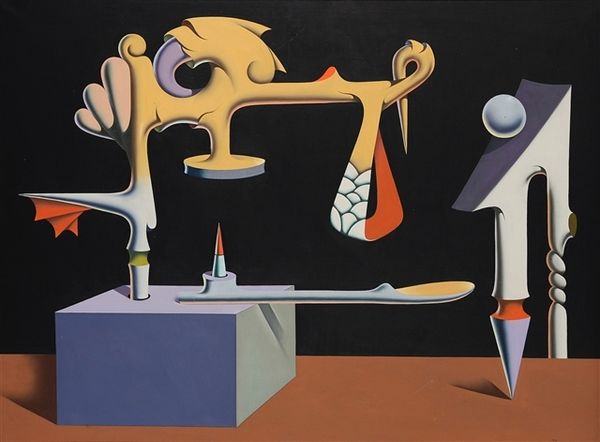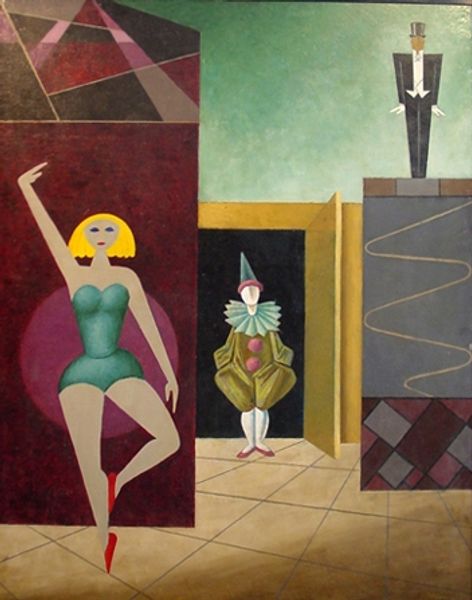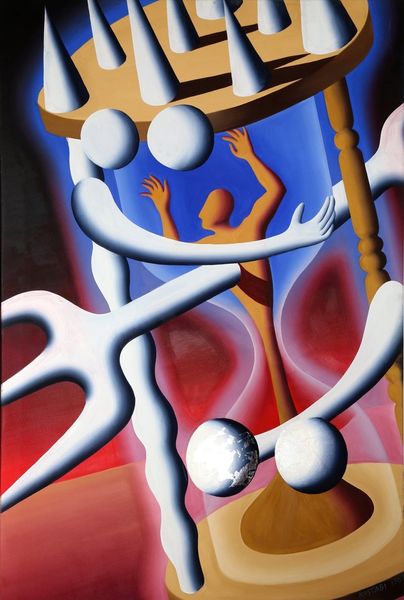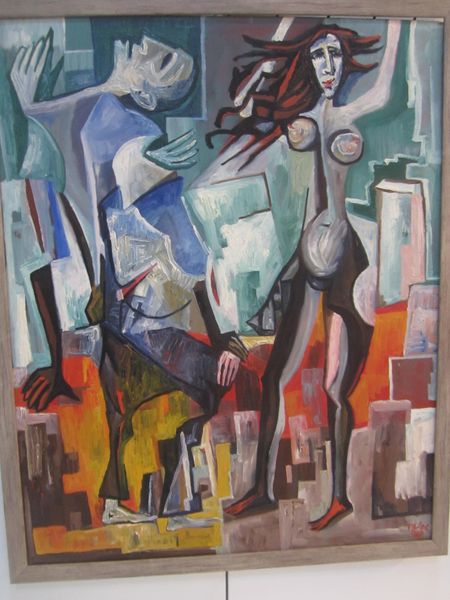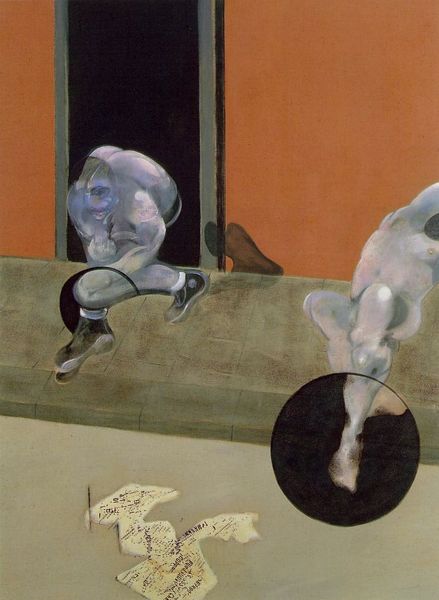
painting, oil-paint
#
portrait
#
narrative-art
#
painting
#
caricature
#
oil-paint
#
caricature
#
figuration
#
surrealism
#
portrait art
#
erotic-art
Copyright: Felix Labisse,Fair Use
Curator: The French Surrealist Félix Labisse painted "La demande en mariage," or "The Marriage Proposal," in 1929, using oil on canvas to render this rather unsettling scene. Editor: Unsettling is right! There's a stark, dreamlike quality... are those disembodied figures? The whole scene evokes a strange, unsettling anxiety, a tension that's hard to place. Curator: Labisse was deeply interested in the power dynamics of the human psyche. I read this canvas through the lens of the 'male gaze' prevalent during the rise of surrealism. The objectification of the female form, seen in the headless torso and exaggerated features, speaks to anxieties around desire and control in a patriarchal society. The title suggests an engagement, but what kind of union are we really witnessing? It reads like an enforced ritual. Editor: Interesting point! I’m seeing more than just anxiety now. Notice the recurring motif of hands – the disembodied, spectral hand in the background mirroring the articulated arm presenting… something, while the albino-esque figure stretches out a seemingly protective arm. The orb, centrally placed, shines like a strange promise. Is this the “truth” that will be delivered upon an agreement, maybe marriage? Curator: Precisely, that tension, I believe, reflects anxieties specific to the interwar period. The rise of fascism, alongside debates around sexual liberation, meant established social contracts were under immense strain. The painting can be viewed as a representation of that disquiet. Labisse is questioning the foundations on which such unions were built. Are these unions based on a free-willed agreement or under social constraint? Editor: Yes, exactly, it suggests an attempt to grapple with evolving roles and hidden dynamics in play with symbols. Perhaps also trying to unveil the cultural significance behind this type of social alignment… It leaves you thinking, not only about Labisse's intention, but also about yourself: what do you find, in this piece? Curator: And isn’t it remarkable how such an unsettling artwork invites such a depth of reflection. Editor: Definitely! Labisse leaves us much to think about when considering how power can contort the meaning behind a supposed act of devotion.
Comments
No comments
Be the first to comment and join the conversation on the ultimate creative platform.
